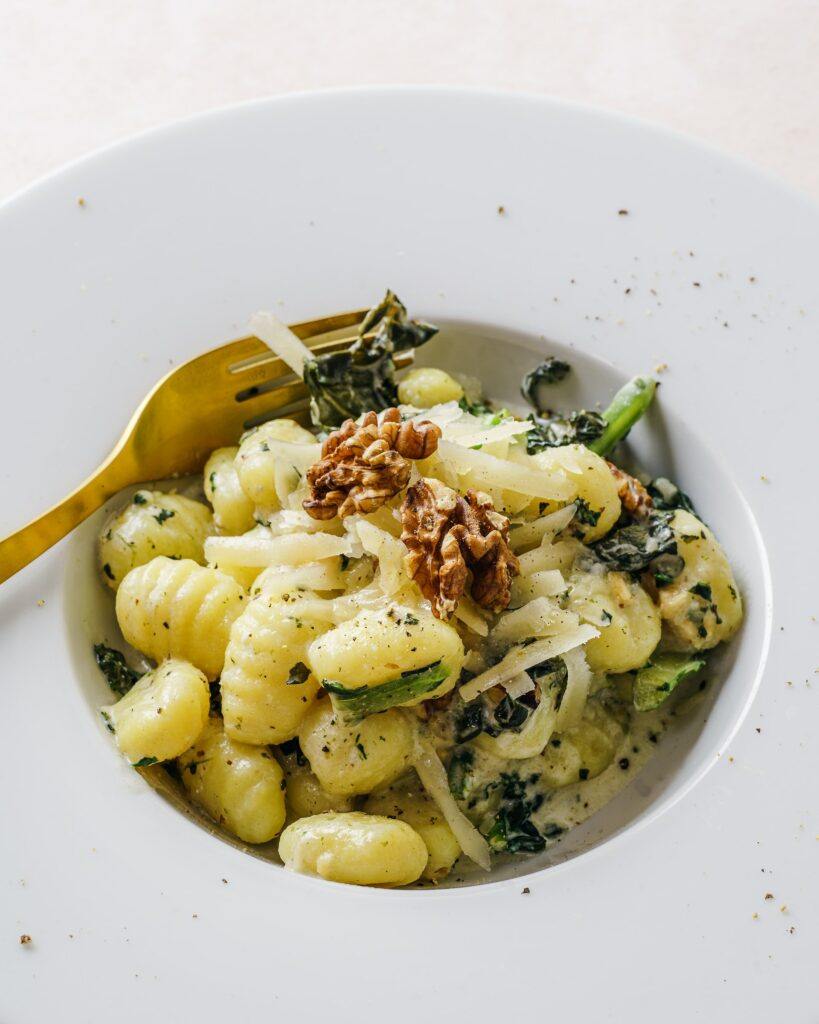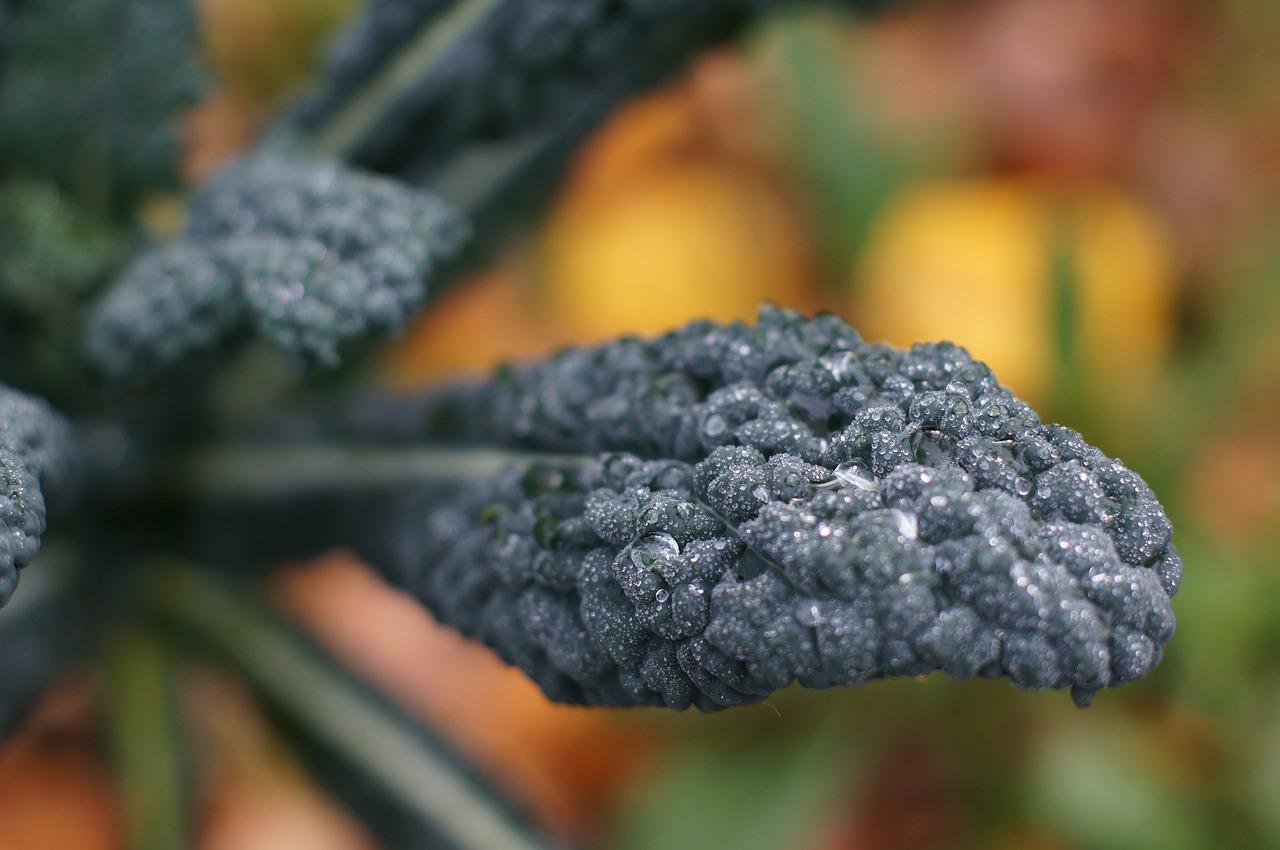Growing your own fruit and vegetables is always a valuable enterprise and never more so when food prices are rising.
Here we will look at how to grow Cavolo Nero which translates to “Black Cabbage”, a type of very dark and textured Kale strongly associated with Tuscany, but actually grown and regarded highly all through Italy and one of the ingredients of classic Minestrone soup.
Fruit and vegetables that are high in nutrients and super fresh can be achieved with minimal effort, and the brassicas are a good low maintenance option for supplying leafy greens right into the winter.
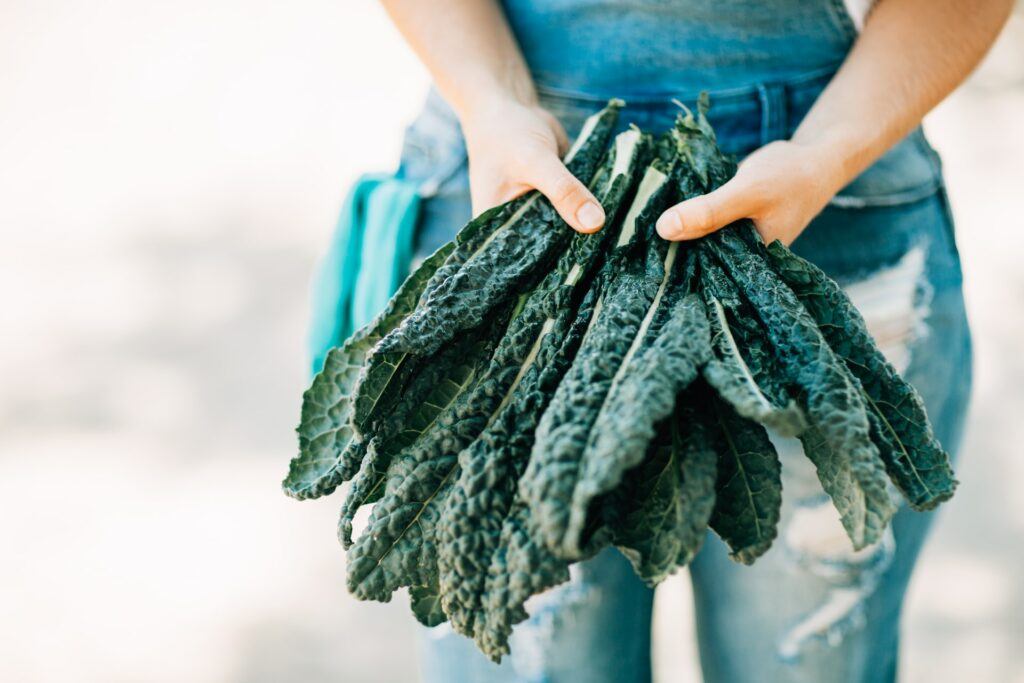
The Nutritional Benefits of Cavolo Nero
Cavolo Nero has some of the highest antioxidant levels of any food, necessary for clearing the free radicals that can damage cells. It is also rich in carotenoids, such as beta-carotene and lutein.
These are beneficial to eye health and vision.
Like all leafy greens, Kale and Cavolo Nero in particular possesses vitamins A, C and K, as well as folic acid.
These promote overall growth, healing and healthy blood.
How to Grow Cavolo Nero From Seed
It is recommended to sow Cavolo Nero in spring or autumn.
Seeds sown in the spring will be ready to pick by autumn/winter and will continue until the following spring.
Seeds sown in the autumn will usually continue to produce a crop for two successive springs if well maintained.
You can sow into individual plug pots or directly into the ground.
I have sown the seeds directly into the ground in spring this year and they are coming up well but the seeds have moved somewhat and on reflection perhaps sowing in plugs would have been better so that when I transplanted them into the bed they would have been more regularly spaced.
I will remember this for next time.
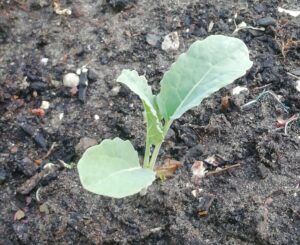
If you start them off in the greenhouse remember to wait until they have five or so good strong leaves and then harden them off before planting them permanently outside to get them used to the cooler temperatures.
When planting in their final position, create rows and leave about 50cm – 60cm between plants as they will grow quite large and this will prevent overcrowding.
The soil needs to be well draining but with reasonable nutritional value in order to get the best crop, so add some compost if you have very poor soil and water enough to keep the soil moist but not waterlogged.
Position the plants in full sun (ideal) to partial shade.
I have had to net my vegetable bed as the early seedlings were proving very tempting to pigeons.
So far there has been no slug or snail damage though, which is a welcome surprise.
Edit: This did not last unfortunately! I had lots of Cabbage White caterpillars that I had to keep picking off.
Crop Maintenance and Harvesting
Cavolo Nero is very low maintenance and hardy. It is a winter crop so does not mind low temperatures, and in fact is said to taste better once it has had been touched by the first frost.
It is also quite disease resistant so a really great option for beginner gardeners who want to grow vegetables.
Some of the older outer leaves will discolour over time and these should be removed to improve air circulation.
It is important to weed the vegetable bed also for the same reason, and keep the soil loose by hoeing occasionally as this will promote soil health.
You can just cut the whole plant once it has reached maturity and use all the leaves at once, but a better way if you want a constant fresh supply is to pick the leaves that are medium-sized.
This way the larger darker leaves can continue to photosynthesize and provide energy for the plant while the smaller leaves can grow on and be picked as they reach the right size.
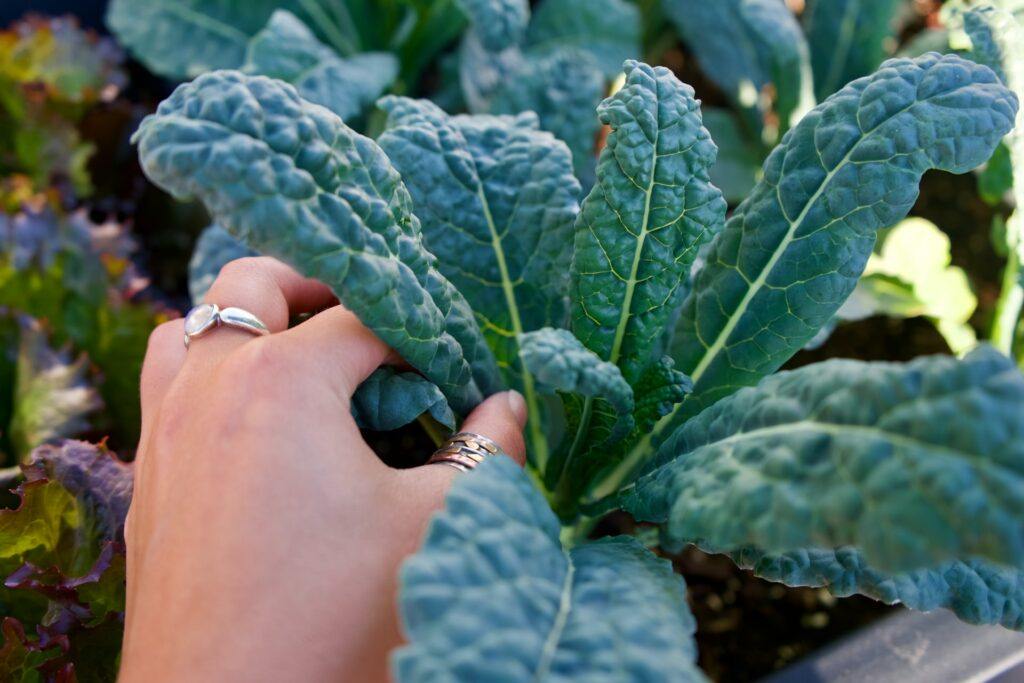
Wash the leaves thoroughly after picking.
You may want to use the smaller younger leaves for fresh salads and use the larger, slightly tougher leaves for cooking with.
The paler stalks can be cut out of the older leaves but can be left in the younger leaves for appealing crunch and texture.
Cavolo Nero and other cabbages can be inclined to bolt when temperatures become warmer, this is when the plant moves into a flowering and seed reproductive phase rather than foliage.
This moves all the energy and nutrients from the leaves and stems, making them tough, leggy and woody.
You can try to keep the soil temperature down as much as possible by mulching and watering to slow this process down, but as the plants move into their second year this will happen naturally.
There is not much that can be done apart from catching it early and nipping the flowering parts out as soon as you see them, done early enough they are edible and tasty.
You can also harvest the leaves while they are at their best.
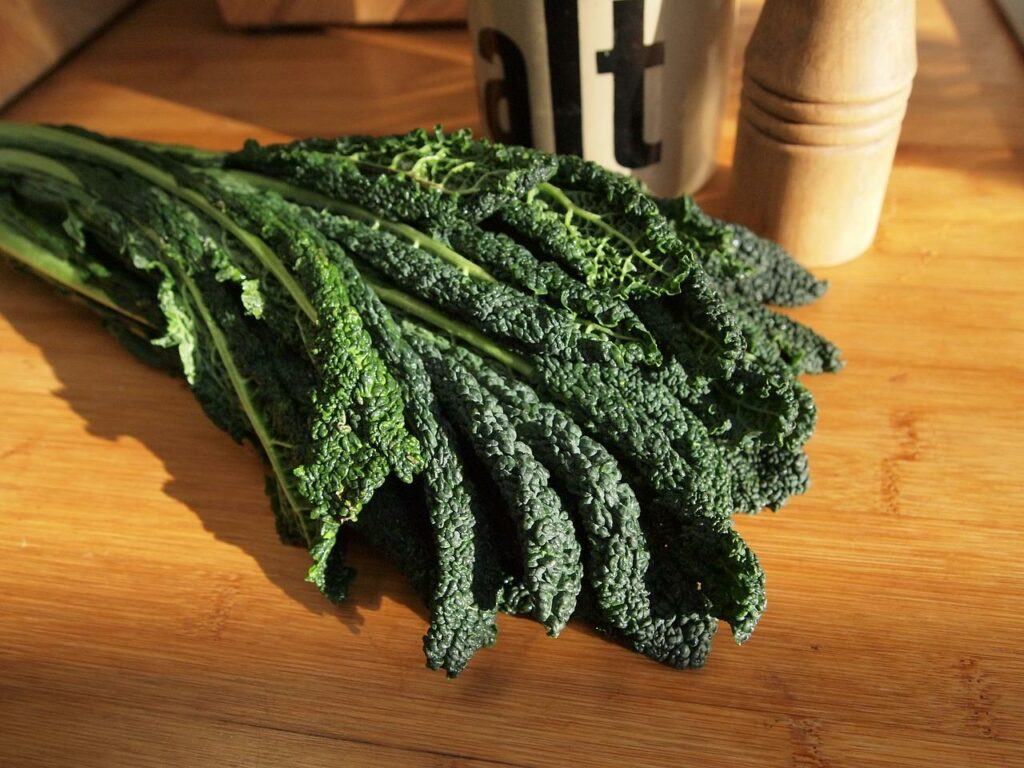
Cavolo Nero as an Ornamental Plant
The mature Cavolo Nero plant is absolutely stunning plant to have in the garden and many people intersperse their brassicas with flowers to create a “Potager” or “Edimental” effect.
With the dark green almost glaucous purple ripples of the leaves they are very attractive planted with contrasting shades of yellow and orange flowers, such as Nasturtiums (also edible), or perhaps complimentary colours like blue and pink.
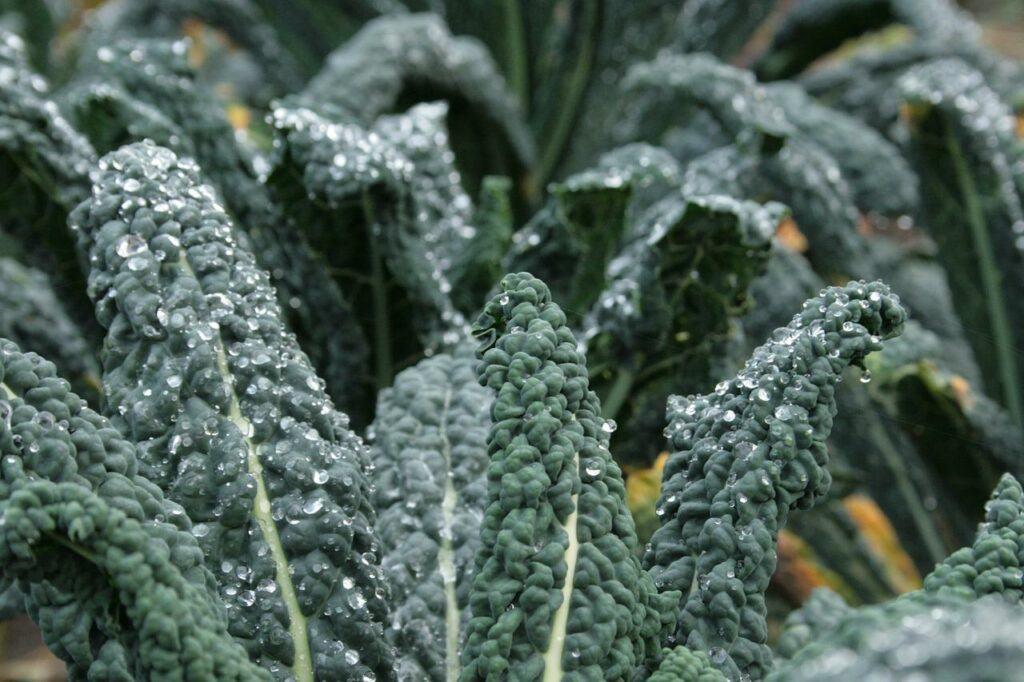
Conclusion
I would really recommend Cavolo Nero as a garden vegetable. It is extremely good for you and looks fabulous either in the ground or in containers.
Another benefit is that you will be able to harvest the leaves right through to the first frost and beyond, providing a welcome source of food and foliage after many other plants have begun to fade.
Seeds are easy to source from garden centres, supermarkets or home ware stores and the plants themselves produce a high volume of large leaves that can be eaten in numerous ways.
They can be oven dried or humidified to make crisps, used in soups and stews, or eaten in fresh salads and pasta dishes.
